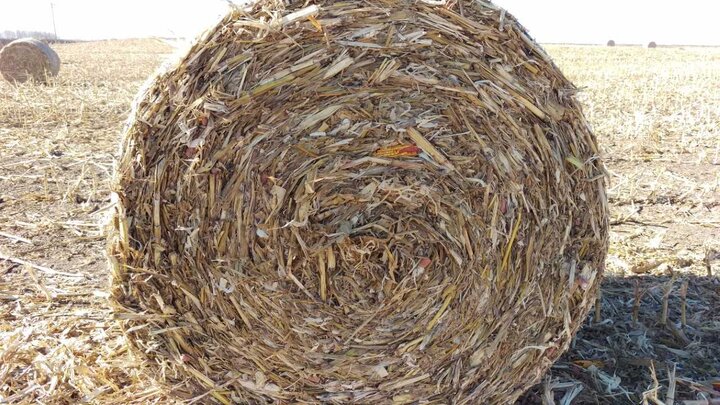Grazing for Interseeding
Pastures and hay meadows provide higher quality feed, are more productive and require fewer inputs when they have good forage legumes growing in them.
Outside of moisture, nitrogen is often the limiting nutrient in pasture production. While commercial fertilizer may be a quick and easy option, it’s costly. Instead, let’s grow our own N using legumes.
Do you have a pasture area or hay meadow that is relatively free of weeds and makes up no more than about 15% of your total pasture acres? If so, here is what I want you to do. From now until that grass will grow no more this year, I want you to graze that grass hard. Grub it down, then graze it some more. Maybe you’ve already accomplished this with the dry conditions this summer.
Now why would I recommend overgrazing? Surely it will hurt the grass. Well, that's exactly what we want. Next spring, you will interseed legumes like red clover, white clover and alfalfa into that grass to make it more nutritious and productive. We may even consider a winter frost seeding if conditions are right.
The biggest challenge to establishing legumes into a grass sod is competition by that existing grass on new, slow growing legume seedlings. Anything you do to reduce competition and slow down grass growth will help. Overgrazing this fall prior to next spring’s seeding will weaken the grass and slow its spring growth, thus giving new legume seedlings a better chance to get started.
And while you’re at it, also collect some soil samples. Then analyze them and apply any needed fertilizer. Legumes especially need good phosphorus and the proper soil pH.
So, add some legumes to your pasture next spring. Graze your grass this fall until virtually nothing is left. Then, keep grazing a couple weeks more just to make sure. Legumes you add next spring will establish better because of it.
Hay Testing
Do you know the quality of the hay or silage that you harvested this past season? It is important to know how much protein and energy your cows will get when you start feeding, or how much supplement to feed. Find out by following instructions for sampling and testing.
Maybe the most important step in sampling hay is deciding which bales and stacks should be included in each sample. Ideally, each sample should include only bales that were produced under similar conditions.
Obviously, the place to start grouping is to separate different types of hay, like alfalfa or CRP, or corn stalk or meadow hay. But each cutting of hay probably is different from the other cuttings also, so there is another separation. And no two fields or meadows are ever exactly the same, especially if they were cut more than several days apart — this makes another grouping. And what if part of the field was rained on before it was baled? The hay made without rain damage will likely be different from hay with rain damage.
After you’ve made all these separations — which could result in quite a few groups of similar bales — then and only then are you ready to sample. From each group, gather a dozen or more cores from different bales or stacks and combine them into one sample. Be sure to use a good hay probe that can core into at least 12 to 18 inches into the bale.
Finally, send these samples to a certified lab for tests of crude protein and energy content. With the drought conditions of this past year, testing any annual forages for nitrates is a good idea.
Then use this information to feed your cattle as profitably as possible.
Fall Forage Residue Options

Fall harvest provides many valuable forage options for ag producers. For some growers, early high moisture corn harvest is providing strong basis prices. Others may be harvesting whole plants as corn silage, while still others may be waiting for dry down to sell grain into the cash markets.
For those planning to harvest corn as grain, baled stalks offer another income source along with potential forage stalk grazing. Final corn harvest decisions will likely depend on your harvesting equipment available, cashflow needs, feed inventory and projected forage needs and supply.
Our Nebraska Extension Forage Team encourages crop managers to consider the following in your economic and forage harvest plans. Since corn leaves detach from the stalks within one to two months after harvest and may blow out of fields, timely baling and/or grazing soon after harvest is highly recommended to save your valuable corn leaf residue. UNL research indicates that for every 40 bushels per acre of grain production, corn residue production will average about one ton per acre.
Ideally, about two tons of residue should be remain in the field after baling corn stalks to reduce erosion. Also, avoid taking residue cover from fields with slopes higher than 5%, or leave at least half the residue cover to reduce soil erosion along with wind and water.
In corn-soybean rotations, corn stalks harvests are recommended every four years to maintain soil health while still providing additional forage income in a grain sales system.
More baling crop residues research information is available on both CropWatch and the UNL Beef website.
